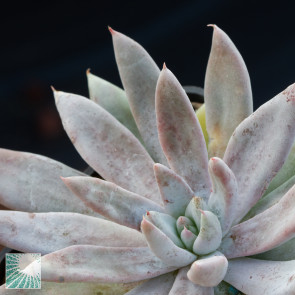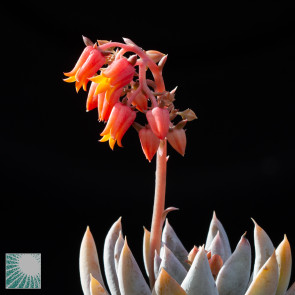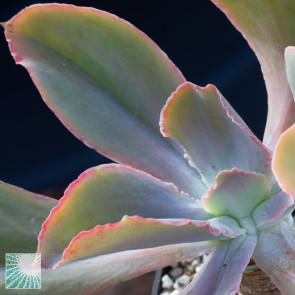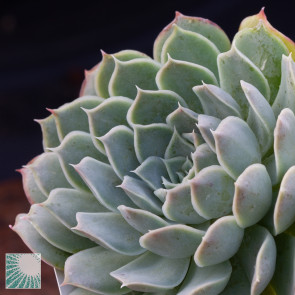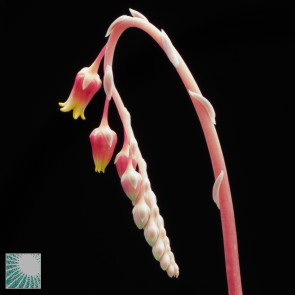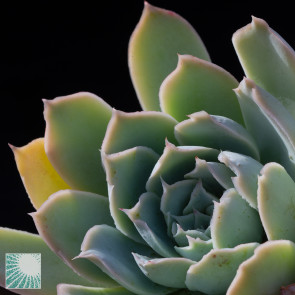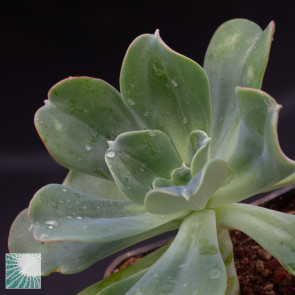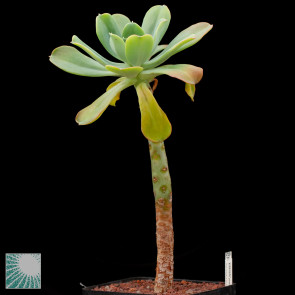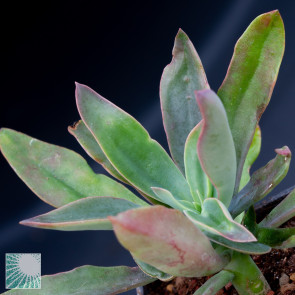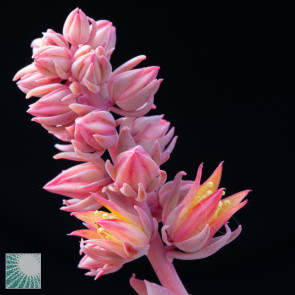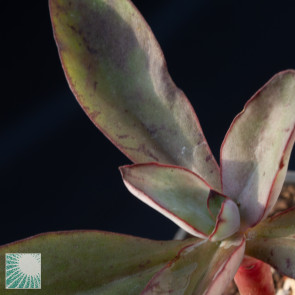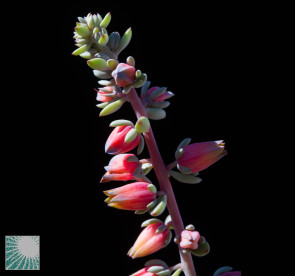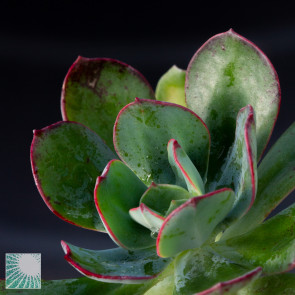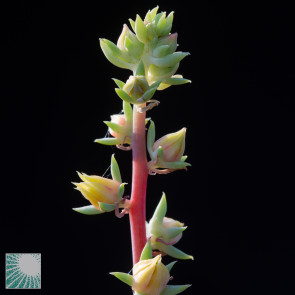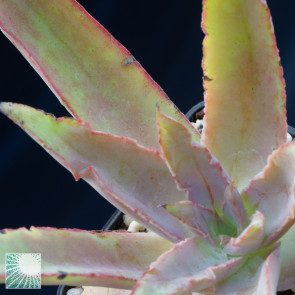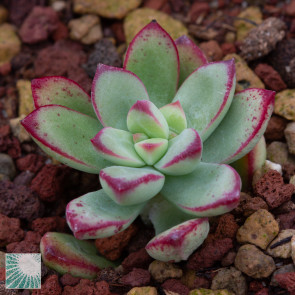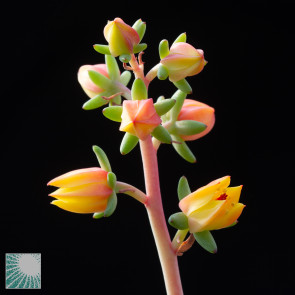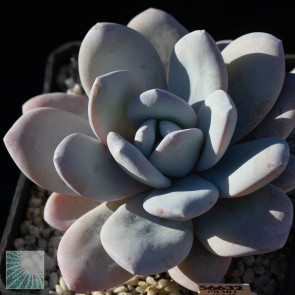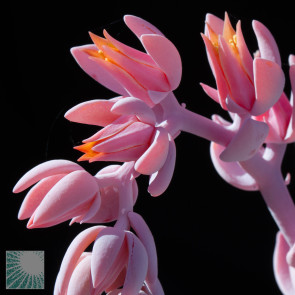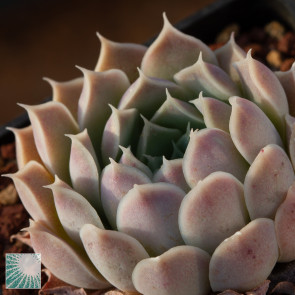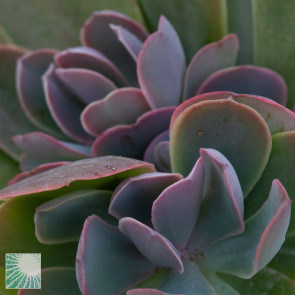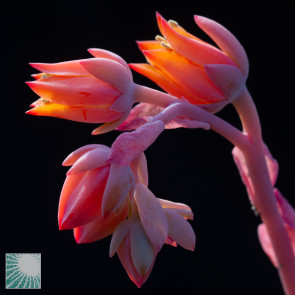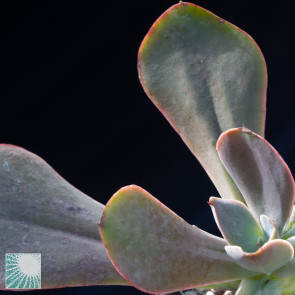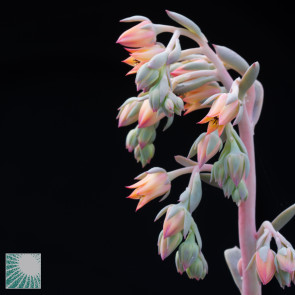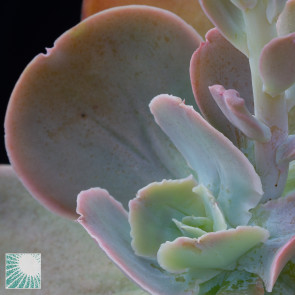You have no items in your shopping cart.
Echeveria
Echeveria is one of the most colorful genus of the vast crassulaceae family due to the considerable variability in the size and coloring of the leaves and flowers.
Their shape is always that of one or more rosettes of succulent leaves, which can be carried by an elongated stem, simple or branched, but more often shortened to be invisible.
Widespread especially in Mexico, the genus is present with some species in the north, in the United States and in the south, in central and southern America.
In nature it prefers mountainous areas, colonizing rocky walls, in cracks where the dripping of rainwater keeps a minimum of humidity.
Care
Given their mountain origins in winter they are tolerant of low temperatures, but even if perfectly dry, only a few species survive freezing. In cultivation they require substrates with a good organic content and well drained. Most echeverias like frequent watering during the vegetation period, punctual fertilization and transplanting once every two or three years. The cochineal mealybug is the parasite that most frequently attacks these plants, causing bad leaf deformations and rot.-
Echeveria tolimanensis
Arroyo Bianco, Hidalgo, Mexico.
Attractive species due to its very pruinose leaves, glaucous green to white in color crossed by characteristic streaks, due to growth. Likes very bright locations and sparse watering. Learn More -
Echeveria sp.
Almoloya, Mexico.
Large-sized species similar to E. gibbiflora of pastel pink color, darker with cold and intense light. Learn More -
Echeveria simulans
El Pajonal, Nuevo León, Mexico.
It owes its name to the resemblance to the species Echeveria elegans, from which it differs in the shape of the thinnest and most numerous leaves, and other characters relating to the shape and color of the inflorescence. A beautiful species, especially if grown in order to keep it compact with abundant light and not too organic soil. Learn More -
Echeveria simulans
Bustamante, Nuevo León, Mexico.
It owes its name to the resemblance to the species Echeveria elegans, from which it differs in the shape of the thinnest and most numerous leaves, and other characters relating to the shape and color of the inflorescence.
A beautiful species, especially if grown in order to keep it compact with abundant light and not too organic soil.
This form is native to Bustamante in Neuvo León, Mexico. Learn More -
Echeveria procera
from the Latin 'procerus' = tall, long, to indicate the growth abit of these plants which reach 2 m in height. Learn More -
Echeveria pittieri
El Porvenir, Guatemala.
Guatemalan species of Echeveria, interesting for the beautiful pink inflorescences with flowers collected in a compact spike. Learn More -
Echeveria penduliflora
Yutanino, Oaxaca, Mexico.
interesting for the rigid, long and narrow lead gray leaves with red margins, grouped in loose rosettes at the top of long stems which branch out over time. The flowers have a curious deep red colour. Learn More -
Echeveria nuda
Nogales, Son., Mexico.
interesting for the glabrous and dark green leaves with thin lamina which form compact rosettes at the top of long, sparsely branched stems. Like Echeveria coccinea, their long inflorescences are spikes bearing flowers without petiole (sessile). The color of the bracts is orange. Learn More -
Echeveria novogaliciana
Villa Hidalgo, Jalisco, Mexico.
Species with beautiful lanceolate leaves, slightly toothed and pastel green-pink in color. Learn More -
Echeveria macdougallii
Lachiguiri, Oaxaca, Mexico.
interesting for the small rosettes of glaucous leaves, reddened by the cold in the winter period, placed on top of slender, branched stems. The flowers can be red or yellow. Learn More -
Echeveria laui
Perhaps one of the most beautiful species of the genus thanks to the white wax that protects the epidermis of the rounded leaves, making them similar to sugared almonds. The cold tinged it pink. Any contact to be avoided in order to maintain its whiteness. Particularly sensitive to water stagnation in the roots, it grows slowly and loves strongly sunny positions. In winter it resists well to temperatures close to 0 °C if kept dry and in a bright and airy position. Learn More -
Echeveria hyalina
San Luis de la Paz, Mexico.
interesting for the light pink or white leaves, with sharp, translucent (hyaline) margins. Learn More -
Echeveria guerrerensis
Aitamirano, Guerrero, Mexico.
Beautiful species that forms a rosette of glaucous green leaves with pink hues. Learn More -
Echeveria gibbiflora
Tlaxiaco, Oaxaca, Mexico.
Species that reaches 50 cm in height with a large rosette of over 40 cm in diameter of spatulate leaves, with a glaucous green tending to pink. Pink flowers with purplish petal tips. Learn More -
Echeveria gibbiflora
Nuyoo, Oaxaca, Mexico.
Species that reaches 50 cm in height with a large rosette of over 40 cm in diameter of spatulate leaves, with a glaucous green tending to pink. Pink flowers with purplish petal tips. Strong shape even when young. Learn More

